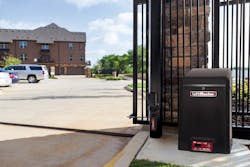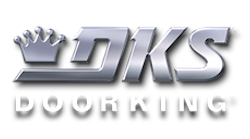Since the turn of the century, the UL 325 standard has undergone significant revisions aimed at protecting people from accidents involving automated gates; however, despite these important changes, most gate operator installations are still not fully compliant with the requirements outlined in the standard.
This oversight becomes even more critical when you consider the vast majority of the public is unaware of the serious threats posed by automated gates. Children and adults can be severely injured or killed if they become entrapped in gates as they are automatically opened or closed. According to the Consumer Product Safety Commission, there are approximately 2,000 injuries involving automated gate systems annually, with one-third of those injuries involving children.
To help significantly reduce the risk of injury or death caused by automated gates, it is imperative that installers and technicians are fully educated on the most current revision of the UL 325 standard so that they can ensure the standard is adhered to on each and every gate installation; however, keeping up with revisions and understanding the various standards can be confusing or easily misunderstood.
Resources on Gate Safety
There are several resources available to gain knowledge about gate safety. The place to start is Underwriters Laboratories (UL) and the American Society for Testing Materials International (ASTM), which are the primary standards organizations guiding safety in the gate industry. The standards include:
- ASTM F2200, which provides guidance to ensure that the mechanical components of a gate are designed and installed in such a way to prevent risk to people in what are called entrapment zones; and
- UL 325 Standard for Safety: Door, Drapery, Gate, Louver and Window Operators and Systems – the standard to which vehicular gate operators are designed, tested and manufactured.
The requirements to ensure that an automated gate system is installed safely are clearly outlined in both standards, and both ASTM F2200 and UL 325 requirements are also included in the International Building Code, International Fire Code and International Residential Code.
For installation training and assistance, the American Fence Association (AFA) offers comprehensive training classes on automated gate design and installation; and the Door and Access Systems Manufacturers Association (DASMA) provides overall guidance for gate operator safety from the perspective of the public interaction with automated gates. Additionally, DASMA references UL 325 and ASTM F2200 to identify typical entrapment zones in both swing and slide gate applications.
So, with all of the noted standards and agencies, how can there still be so many injuries and fatalities resulting from automated gate installations that do not meet the standards? The short answer is that UL 325 is a voluntary standard, with the exception being the state of Nevada, where UL 325 compliance is required by law. While UL 325 may be a voluntary standard, installers put the public and their business at significant risk by not following its requirements.
Accountability for an unsafe gate installation is typically raised after a gate-related accident has occurred. Those held responsible in accident litigation cases typically include the gate installer, the company the gate installer works for, the gate operator manufacturer, the property owner, the property management company as well as anyone who has worked on the gate system at any point in time. The frequency and magnitude of these cases are significant, with very real consequences associated with not ensuring a gate installation is done safely and in full compliance with ASTM F2200 and UL 325 standards.
If you are in the gate operator industry, you have an obligation to understand the requirements of the standards to help protect people from potential dangers of an automated gate. By holding yourself accountable to the gate safety standards, you reduce risk to the public and potential liability, while gaining a strong safety reputation for your business.
Inside the Standards
The simplest way to understand the intent of UL 325 is that if a condition exists where a person can be caught or held in a position that increases the risk of injury, then that zone is an “entrapment zone.”
As recently as Aug. 1, 2018, UL 325 was updated to further drive gate system safety, requiring gate operators (both swing and slide) have a minimum of two monitored safety entrapment protection means in both the open and close directions.
In many cases, gate operator manufacturers incorporate an inherent reversing system into the gate operator, which would count for one means of entrapment protection in both the open and close direction; however, simply relying on the inherent reversing system built into the gate operator is not enough. Additional entrapment protection devices such as a monitored safety edge or monitored photo eyes are now required for safe operation. If the gate operator detects one or both of these devices are not connected or not working, the gate operator will not function.
A gate safety checklist is a great way to inspect swing and slide gate operators to ensure they meet UL 325 and ASTM F2200 standards. As part of LiftMaster’s ongoing gate safety awareness campaign, it created the following gate safety checklist:
- Check the operator label to see if the gate operator is approved to current UL 325 standards.
- Attach proper gate warning signs to both sides of the gate area.
- Be sure all entrapment zones in both the open and close direction are protected by two safety devices.
- Is the gate constructed with safety in mind (the ASTM F220 Standard)? Construction should include: Smooth bottom edges with no protrusions that exceed one-half inch beyond base of gate; all access controls at least six feet from the gate; a separate pedestrian gate that is out of reach of the moving gate; the gate does not move on its own if it is disconnected from its operator; and the gate is prevented from falling over if disconnected from supporting hardware.
- For slide gates, all openings of the gate and adjacent fence must be small enough to not allow a 2.25-inch sphere from passing through; gaps between the gate and fence posts must be less than 2.25 inches; and positive stops are required in both the opening and closing positions.
To review the full checklist, visit http://liftmaster.com/gatesafety.
David Sklodowski is Senior Product Marketing Manager for LiftMaster. Request more info about the company at www.securityinfowatch.com/12389477.




